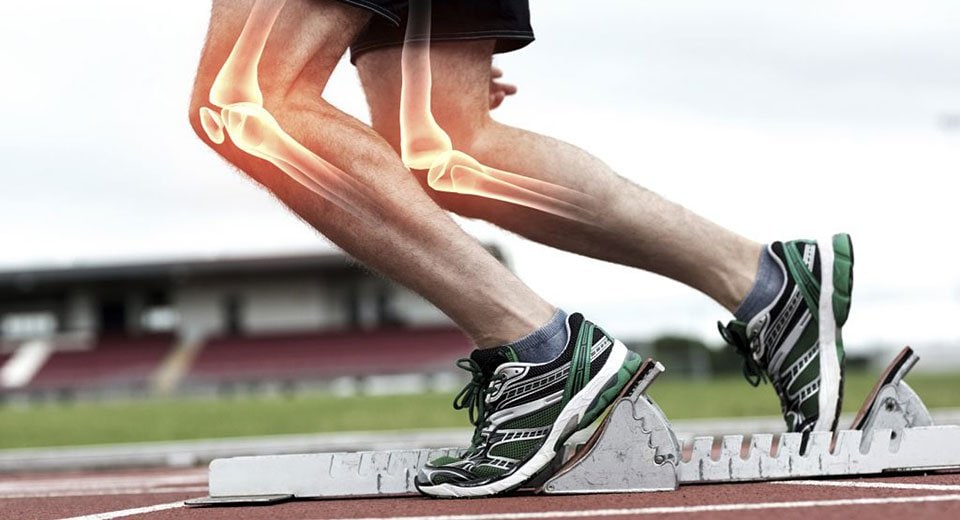‘Weekend warriors’ at risk of ACL injuries
If it happened to Tom Brady, it can happen to you.
For those of us who don’t have getting clobbered by 300-pound opponent as an occupational hazard, the path to an ACL injury is different from Brady’s. It’s all about aging.
“The ligaments get a little stiffer as we age, and as they get stiffer, they’re more prone to rupture,” said Donald O’Malley, MD, an orthopedic surgeon at Falmouth Hospital.
The anterior cruciate ligament (ACL) connects the thigh bone and the shin bone and helps control the motion of the knee.
“It’s just like a rubber band,” he said. “You pull, pull, pull adding more and more force, and it will eventually reach a point where it’s going to rupture.”
Dr. O’Malley, president and founder of Cape Cod Sports Medicine in Falmouth, sees a steady stream of patients over 30 with ACL injuries. There’s a pattern he sees among many of them.
“You go through high school and college and you’re working out all the time You’re part of some sort of team, you’re very active and your body’s in pretty good shape.
“Then there comes a time in your mid-20s when you have the stresses of a real job and maybe a marriage and kids. You’re not going to the gym all that much. You start letting your body go. “By the age of 30, 35 or 40, you have a little chunk of time on the weekend or one night a week to be in a basketball league. You’re doing this with a body that’s been de-conditioned over 20 years and that sets you up for injury,” he said.
In this group of weekend warriors, physicians tend to see certain injuries, he added. For the knee, it’s ACL tears. For the shoulder, it’s rotator-cuff tears. For the ankle, it’s severe ankle sprains and instability.
“ACL injuries are more prevalent, than rotator cuff tears, which are more prevalent than ankle instability,” said Dr. O’Malley, who is the medical co-director for the Falmouth Road Race and team physician for the Cape Cod Baseball League’s Falmouth Commodores.
Brady’s injury was caused by contact. For older, part-time athletes, ACL injuries usually occur as the result of sudden stops or changes in direction. Dr. O’Malley sees it with softball players in the spring, soccer players in the fall and basketball players in the winter.
He says an ACL injury is known as a progressive stretch injury.
“You stretch your leg beyond the full extension to what we call hyper-extension. The ACL gets pivoted on and pulled out, and it ruptures. It stretches, stretches, stretches until it finally fails.”
In addition to causing tremendous pain, an ACL tear causes rapid swelling, according to Dr. O’Malley
“Within 10 minutes, the leg is really swollen, right at the knee,” he said. “If you tear your meniscus, it will swell up overnight.”
The other thing the injured person will notice is that with an ACL injury you can’t stand up and put weight on that knee.
“You think of the famous picture of Tom Brady getting carted off with a guy on either side of him because he couldn’t bear weight on his left leg,” he said. (Brady tore both the ACL and MCL after getting hit in the knee during the opening game of the 2008 season.)
Prompt evaluation after an ACL injury is important, said Dr. O’Malley.
“Call your primary care doctor, who will most likely refer you to an orthopedist. We want to prevent scar tissue from forming. We know an ACL repair done at the appropriate time does far better than a delayed repair.”
If the injury occurs in the evening, ice the knee for 20 minutes every hour and call your doctor in the morning.
ACL injuries affect about 250,000 Americans a year, according to the Centers for Disease Control.
“The treatment for an ACL injury is always surgery for an active individual under age 60,” said Dr. O’Malley. “The knee does not do well without an ACL. It becomes unstable. When you go to pivot to one side, or even when you’re walking and you come to a corner, your knee will buckle and give way. Braces are only minimally effective in adding a little stability to the knee.
“Anyone that has any hope of going back to activity, we’re going to reconstruct the ACL,” he said.
There’s a high rate of success with ACL reconstruction, he added. After surgery, people can return to a high level of activity, including skiing, swimming and tennis.”
ACL surgery is performed arthroscopically and patients usually return home the day of the surgery, he said.
The key to cutting our risk of an ACL injury is avoiding pushing the body too hard with an insufficient warm up, according to Dr. O’Malley.
“The older you get, the more imperative it becomes to do a good warm-up. Forty-year-olds can get away with a 10-minute warm-up, while 50-year-olds should have a 15- or 20-minute warm-up.”
Exercising more than one day a week should be another goal. “If you’re very limited for time, aim for every third day,” he said. “The best light exercise program would be every other day, focusing on general flexibility and some resistance exercises.”
Dr. O’Malley recommended a simple exercise to strengthen and tone the muscles surrounding the knee.
“It’s what I call a door slide. Stand against a door or wall, with your back on the door and let your knees bend to do a little squat, then push yourself back up. That’s an exercise for both your quadriceps and your hamstrings. If you do it nice and slow, you’re actually taking care of the muscle on the outside, the vastus lateralis, and the muscle on the inside, the vastus medialis.”
